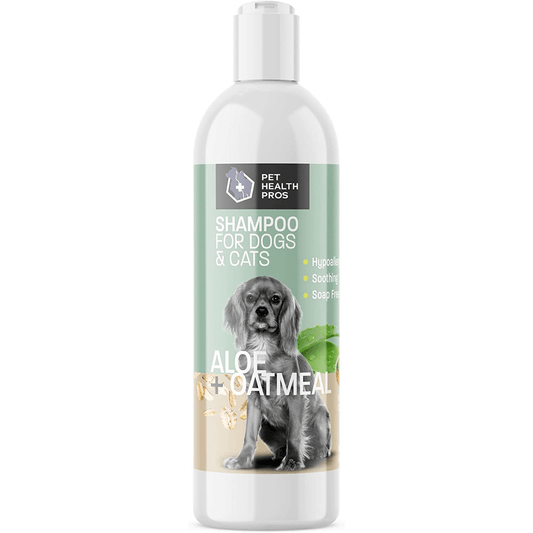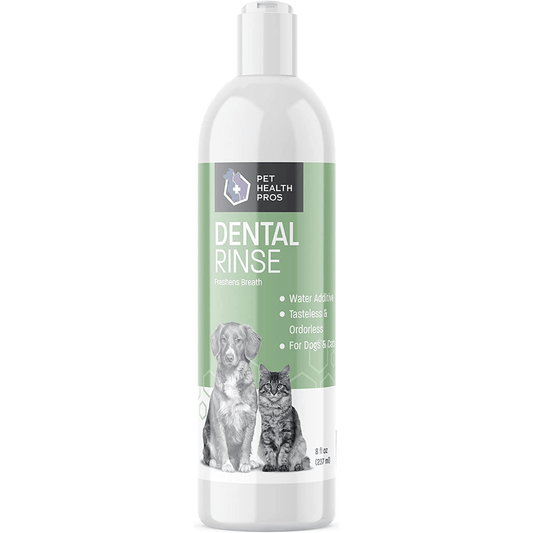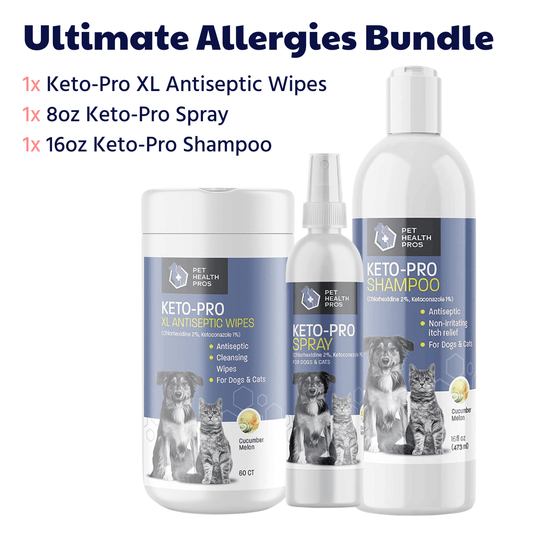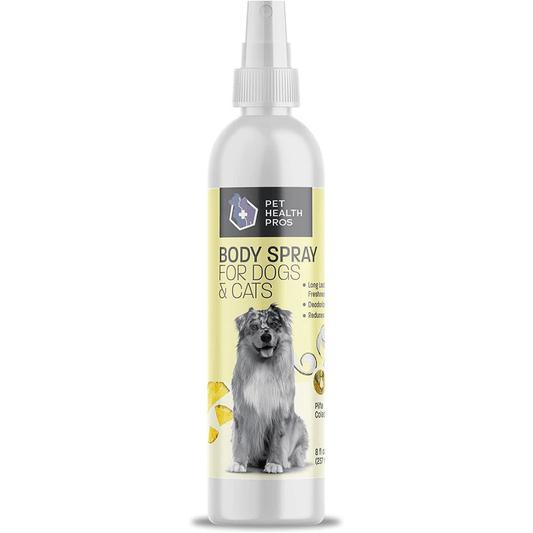If you're a dog owner, keeping an eye on your furry friend's health is a top priority. One common issue that can affect their paws is a yeast infection. These infections can be uncomfortable for your dog and may lead to more serious problems if not addressed. Understanding the symptoms of dog paw yeast infections can help you catch them early and seek the right treatment. Let's break down what to look for and how to handle it.
Key Takeaways
- Look for redness and swelling on your dog's paws.
- Excessive licking or chewing can indicate discomfort.
- A foul smell from the paws may suggest a yeast infection.
- Keep an eye on your dog's behavior; reluctance to walk could be a sign of pain.
- Regular grooming and a balanced diet can help prevent infections.
Identifying Common Symptoms of Dog Paw Yeast Infections
It's no fun seeing your dog uncomfortable, and paw yeast infections can definitely cause some misery. Spotting the signs early can make a big difference in getting your furry friend some relief. So, what should you be looking for?
Redness and Inflammation
One of the first things you might notice is that your dog's paws are redder than usual. This isn't just a little pinkness; it's a noticeable, angry red, especially between the toes. The skin might also look inflamed or swollen. It's like when you get a rash – irritated and definitely not happy. This inflammation is a key indicator that something's up, and it's worth taking a closer look.
Itching and Discomfort
This is a big one. If your dog has a yeast infection in their paws, they're going to be itchy. Really itchy. You might see them constantly licking, chewing, or scratching at their paws. It's not just a casual lick; it's an obsessive, can't-leave-it-alone kind of thing. Excessive itching can lead to further irritation and even open sores, so it's important to address it quickly.
Foul Odor
Okay, this isn't the most pleasant topic, but it's important. Yeast infections often come with a distinctive, unpleasant odor. Some people describe it as a musty or cheesy smell. If you're noticing a weird smell coming from your dog's paws, especially if it's combined with redness and itching, there's a good chance it's a yeast infection. Don't ignore that dog paw smell!
Behavioral Changes Indicating Discomfort
It's not always obvious when your dog is feeling under the weather, especially if they're good at hiding their pain. But, if a yeast infection is brewing in their paws, you might notice some changes in their behavior. These changes can be subtle at first, but they're important clues that something isn't right. Keep an eye out for these signs, as they can indicate your furry friend is experiencing discomfort and needs some attention.
Excessive Licking or Chewing
One of the first and most noticeable signs of discomfort is excessive licking or chewing at their paws. Dogs will often try to soothe the itch or irritation by constantly grooming the affected area. It can become almost obsessive, and you might find them doing it more frequently than usual. This behavior can lead to further irritation and even secondary infections if they break the skin.
Reluctance to Walk
If your dog suddenly becomes reluctant to go for walks, or starts limping, it could be a sign that their paws are bothering them. Yeast infections can make walking painful, especially if the infection is between their toes or on the pads of their feet. You might notice them slowing down, stopping frequently, or even refusing to walk altogether. This is a pretty clear indicator that something is up, and it's worth checking their paws for any signs of infection. If you notice this, consider checking for dog paw yeast infections.
Changes in Mood
A dog in discomfort might also exhibit changes in their overall mood. They might become more irritable, withdrawn, or even aggressive. A normally playful dog might become lethargic and uninterested in activities they usually enjoy. These mood changes can be subtle, but if you know your dog well, you'll likely notice that something isn't quite right. It's important to consider these changes in conjunction with other symptoms to get a better understanding of what might be going on.
Changes in behavior can be a key indicator that your dog is experiencing discomfort from a paw yeast infection. Paying close attention to these subtle signs can help you catch the problem early and get your furry friend the treatment they need.
Physical Signs to Look For
Alright, let's get into the nitty-gritty – the actual physical stuff you can see and feel on your dog's paws if they've got a yeast infection. It's not always just about the behavior; sometimes, it's right there in front of you.
Redness and Inflammation
Okay, so first up, redness. If your dog's paws are looking unusually pink or red, especially between the toes or around the nail beds, that's a big red flag (pun intended!). Inflammation often goes hand-in-hand with this. The skin might look puffy or swollen, and it'll probably be warm to the touch compared to the rest of their paw. It's like when you get a cut and it gets all angry-looking – same deal here. Don't ignore it; it's a sign something's definitely not right.
Itching and Discomfort
This one's pretty straightforward. If your dog has a yeast infection, they're gonna be itchy. Like, really itchy. You might notice them constantly licking, chewing, or scratching at their paws. It's not just a casual once-in-a-while thing; it's persistent and seems to be driving them nuts. Sometimes, they might even whine or yelp when they scratch because it's so uncomfortable. Keep an eye out for this, especially if it's a sudden change in their behavior. If you notice your dog is experiencing discomfort, consider looking into dog ear infection symptoms.
Foul Odor
Okay, this is the one that's hard to miss (or rather, hard to not miss). Yeast infections often come with a distinct, unpleasant smell. Some people describe it as musty, cheesy, or even kind of like stale popcorn. It's not your typical doggy odor; it's something else entirely. If you're getting a whiff of something funky coming from your dog's paws, especially if it's combined with the other symptoms, there's a good chance yeast is the culprit. Time to investigate!
Swelling and Warmth
Swelling is a key indicator. If the paws appear puffy or enlarged, especially around the toes or pads, it suggests inflammation. Accompanying this, the affected area might feel warmer than usual to the touch. This combination of swelling and warmth is a strong sign of infection.
Crusty or Flaky Skin
Another lovely visual cue: crusty or flaky skin. The skin on your dog's paws might start to look dry, scaly, or even develop crusts or lesions. It's not just regular dry skin; it's often accompanied by redness and inflammation. The flakes might be white or yellowish, and the skin underneath might look raw or irritated. This is a sign that the yeast is really taking hold and messing with the skin's natural barrier.
Discoloration of the Fur
Finally, keep an eye on the fur around your dog's paws. If you notice that it's starting to turn a reddish-brown color, especially around the toes or where they're constantly licking, that's a sign of yeast overgrowth. The discoloration is caused by the saliva and porphyrins (naturally occurring pigments) staining the fur. It's not always super obvious, especially on dogs with dark fur, but it's definitely something to watch out for. Regular grooming can help you spot this early on.
Understanding the Causes of Yeast Infections
It's important to understand what causes yeast infections in dogs to better prevent and manage them. Several factors can contribute to the overgrowth of Malassezia, the yeast species most commonly involved in these infections. Let's explore some of the primary causes.
Underlying Health Issues
Sometimes, a dog's overall health can make them more prone to yeast infections. Conditions that weaken the immune system, like allergies or hormonal imbalances, can disrupt the natural balance of microorganisms on the skin. For example, dogs with hypothyroidism or Cushing's disease may be at higher risk. Similarly, dogs undergoing long-term antibiotic or corticosteroid treatment can experience changes in their skin's microflora, creating an environment where yeast can thrive. Addressing these underlying issues is often key to resolving recurrent yeast infections. If your dog has allergies, consider allergy management.
Environmental Factors
The environment plays a big role in whether a dog develops a yeast infection. Warm, humid conditions are ideal for yeast growth. Dogs who spend a lot of time outdoors, especially in damp areas, are more likely to develop infections. Think about it – after a swim or a rainy walk, if your dog's paws stay wet for too long, it creates the perfect breeding ground for yeast. Proper drying, especially between the toes, is super important. Also, certain cleaning products or lawn treatments could irritate your dog's skin, making it more susceptible to infection.
Dietary Influences
Diet can also contribute to yeast infections. A diet high in carbohydrates and sugars can fuel yeast growth. Some vets believe that food sensitivities or allergies can also play a role by causing inflammation and weakening the skin's barrier function. Consider a balanced diet for your dog. While more research is needed, many owners find that switching to a limited-ingredient diet or one that's lower in carbs can help manage yeast issues. It's always a good idea to talk to your vet about the best dietary options for your dog, especially if they have recurring infections.
It's important to remember that yeast infections are often multifactorial. This means that several factors may be at play, and addressing just one aspect might not be enough to resolve the problem completely. A holistic approach that considers the dog's overall health, environment, and diet is usually the most effective way to manage and prevent these infections.
When to Seek Veterinary Care
It's easy to think you can handle everything yourself, especially with a little itching. But sometimes, you need a pro. Knowing when to call the vet can save your dog a lot of discomfort and prevent bigger problems down the road. Don't hesitate to reach out if things seem off.
Persistent Symptoms
If you've tried some basic home care, like cleaning your dog's paws with a mild antiseptic wash, and the symptoms just won't quit, it's time to see a vet. Persistent redness, itching, or a foul odor that lingers despite your best efforts are definite red flags. Don't wait too long, hoping it will clear up on its own. A vet can properly diagnose the issue and prescribe the right treatment.
Signs of Secondary Infections
Yeast infections can sometimes lead to secondary bacterial infections. Keep an eye out for these signs:
- Pus or discharge from the affected area
- Increased swelling or pain
- Fever or lethargy
These symptoms indicate a more serious problem that needs immediate veterinary attention. Ignoring them could lead to complications and a longer recovery for your furry friend.
Impact on Quality of Life
If your dog's paw yeast infection is affecting their daily life, it's time to get help.
Is your dog reluctant to walk or play? Are they constantly licking or chewing at their paws, disrupting their sleep or your peace of mind? These are clear signs that the infection is significantly impacting their well-being. A vet can provide relief and get your dog back to their happy, active self.
Don't underestimate the impact of chronic discomfort on your dog's overall health. Early intervention is always best.
Preventative Measures for Dog Paw Health
Regular Grooming Practices
Keeping your dog's paws clean and well-groomed is a simple way to prevent yeast infections. Make sure to trim the fur between their toes regularly. Long fur can trap moisture and debris, creating a perfect environment for yeast to grow. After walks, especially in damp areas, wipe your dog's paws with a damp cloth or pet-friendly wipe. This helps remove any potential irritants or yeast spores they may have picked up. Also, check their paws regularly for any signs of redness, swelling, or discharge. Early detection is key to preventing minor issues from becoming major problems.
Maintaining Dryness
Moisture is a major factor in yeast infections, so keeping your dog's paws dry is super important. After baths or swimming, thoroughly dry their paws, paying special attention to the areas between the toes. If your dog tends to lick their paws a lot, try to discourage this behavior, as saliva can also contribute to moisture buildup. Consider using dog booties when walking in wet or muddy conditions to protect their paws from excessive moisture. If your dog's paws get wet frequently, you might want to invest in a paw dryer specifically designed for pets.
Balanced Diet Considerations
Diet plays a big role in your dog's overall health, including their susceptibility to yeast infections. A diet high in carbohydrates and sugars can promote yeast growth. Talk to your vet about choosing a high-quality dog food with limited carbohydrates and no added sugars. Some dogs may benefit from a diet that includes probiotics to support a healthy gut flora, which can help prevent yeast overgrowth. Also, make sure your dog is getting all the necessary vitamins and minerals to support a strong immune system. A healthy immune system is better equipped to fight off yeast infections.
Maintaining a healthy weight is also important, as overweight dogs may have skin folds that trap moisture and create a breeding ground for yeast. Regular exercise and portion control can help keep your dog at a healthy weight and reduce their risk of yeast infections.
Treatment Options for Yeast Infections
So, your dog has a yeast infection in their paws? It's super common, and thankfully, there are several ways to tackle it. Let's explore some treatment options.
Topical Treatments
Topical treatments are often the first line of defense. These involve applying antifungal creams, ointments, or sprays directly to the affected area. The key is consistency. You'll need to apply the medication as directed by your vet, usually once or twice a day, for the duration they recommend. Make sure to clean and dry the paws thoroughly before application to help the medication absorb properly. Some common ingredients to look for in these treatments include miconazole or ketoconazole.
Oral Medications
Sometimes, topical treatments aren't enough, especially if the infection is severe or widespread. In these cases, your vet might prescribe oral antifungal medications. These medications work from the inside out to combat the yeast. It's important to follow your vet's instructions carefully when administering oral medications, as they can sometimes have side effects. The length of treatment can vary depending on the severity of the infection. If your dog is on oral medication, it's important to monitor their liver function with your vet.
Home Remedies to Consider
While not a replacement for veterinary care, some home remedies can help support treatment and provide relief.
- Apple Cider Vinegar Soak: Dilute apple cider vinegar with water (usually a 50/50 mix) and soak your dog's paws for 5-10 minutes. Make sure to dry the paws thoroughly afterward. This can help create an environment less favorable for yeast growth.
- Coconut Oil: Applying a thin layer of coconut oil to the affected area can help soothe the skin and has some antifungal properties. Ensure your dog doesn't ingest too much, as it can cause digestive upset.
- Probiotic Supplements: Adding probiotics to your dog's diet can help boost their immune system and promote a healthy gut, which can indirectly help combat yeast infections. Always consult your vet before starting any new supplements.
It's important to remember that home remedies should be used as a supplement to, not a replacement for, veterinary treatment. If your dog's condition doesn't improve or worsens with home remedies, it's crucial to seek professional help.
Remember, dealing with dog paw yeast infections can be a bit of a process, but with the right approach and a little patience, your furry friend will be back to their happy, healthy self in no time!
If you're dealing with a yeast infection, there are several treatment options available to help you feel better. Over-the-counter creams and medications can often provide quick relief. For more severe cases, a doctor may prescribe stronger treatments. It's important to choose the right option for your situation. For more information and guidance on how to treat yeast infections effectively, visit our website today!
Final Thoughts on Dog Paw Yeast Infections
In summary, keeping an eye on your dog's paws is really important. If you notice any signs of a yeast infection, like redness, swelling, or a bad smell, it’s best to act quickly. Early detection can make a big difference in treatment. Always consult your vet if you're unsure or if symptoms persist. They can provide the right advice and treatment options. Remember, a healthy pup is a happy pup!
Frequently Asked Questions
What are the signs of a yeast infection in my dog's paws?
Look for redness, swelling, and a bad smell coming from your dog's paws.
Why is my dog licking its paws so much?
Excessive licking can mean your dog is feeling itchy or uncomfortable, possibly due to a yeast infection.
When should I take my dog to the vet for a paw issue?
If the symptoms last for more than a few days or if your dog seems to be in pain, it's time to see a vet.
Can diet affect my dog's chances of getting a yeast infection?
Yes, a poor diet can lead to health issues that might cause yeast infections.
What can I do to help prevent yeast infections in my dog's paws?
Keep your dog's paws dry and clean, and make sure they have a balanced diet.
Are there home remedies for treating yeast infections in dogs?
Some people use natural remedies, but it's best to consult your vet before trying anything.








